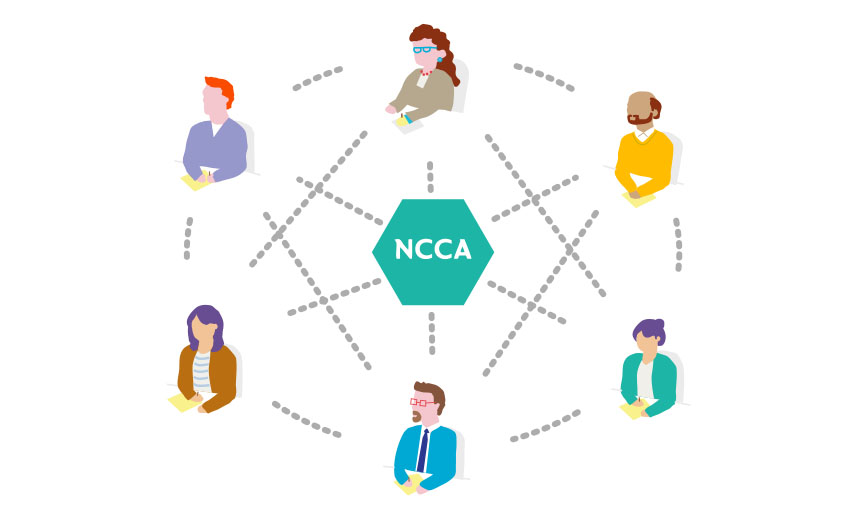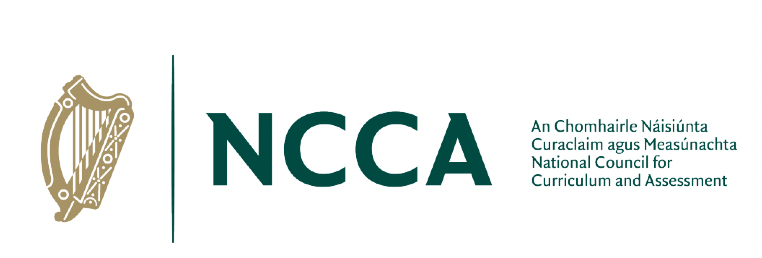Championing engagement, partnership, and collaboration

The National Council for Curriculum and Assessment’s (NCCA) engagements, partnerships, and collaborations extend across the Irish early childhood, primary, and post-primary education sectors and beyond.
NCCA’s approach to developing curriculum and assessment advice is marked by creative thinking and a keen eye for opportunities to bring together diverse views, perspectives, and areas of expertise to challenge and advance thinking on learning, teaching, and assessment. Guided by eight principles, one of which emphasises partnerships and collaborations, NCCA employs a variety of interaction formats to collaborate with early childhood settings and schools, and with the broader education sector in shaping curriculum and assessment developments. This commitment translates into five specific actions.
1. Support for the capacity of schools and settings: NCCA supports schools and settings in developing, introducing, and enacting changes in curriculum and assessment. We work proactively in a busy and dynamic environment with schools and settings as we develop, discuss, and review key developments. Through proactive collaboration with a network of approximately 60 primary schools, special schools, post-primary schools, and special schools since 2018, we have involved teachers, school leaders, and early childhood professionals in the redevelopment of the primary curriculum, ensuring their insights directly influence the changes happening. In the words of one teacher: “The Schools Forum provides a space to ponder big questions such as what we value in education, what its purpose is, how and what children should be taught, what is important in our current context and what the future might demand.”
2. Inclusive consultations: NCCA ensures that the diverse voices and the experiences of children, students, parents, and communities are central to discussions and consultations on curriculum and assessment developments. We are committed to using a variety of ways for people to share their thoughts and experiences. Here are some examples from early childhood, primary, and post-primary. At early childhood, we are updating Aistear: the Early Childhood Curriculum Framework. This involves a far-reaching public consultation with the early childhood sector as well as consultation with babies, toddlers, and young children to hear their ideas on what they would like to see as part of their early childhood learning experiences. At primary, we are working closely with Hub na nÓg and the Department of Children, Equality, Disability, Integration, and Youth (DCEDIY) to provide spaces and opportunities for children to tell us about their hopes for the future of the primary school curriculum. At post-primary, as part of the broader redevelopment of senior cycle, a revised Transition Year Programme Statement (TYPS) is currently being developed. During the consultation on the draft TYPS, NCCA included the voices of parents, students, teachers, TY coordinators, and school leaders during school visits. For schools not involved in the school visit component of the consultation, a school-based survey was available. NCCA hosted joint consultation events with the Irish Second Level Students’ Union (ISSU) and members of the TY Teacher Professional Network.

3. Strategic collaborations: NCCA actively participates in research, curriculum, and assessment initiatives through collaborations with agencies, organisations, and networks. Examples include membership of the Consortium of Institutions for Development and Research in Education in Europe (CIDREE). Involvement in this network enables us to contribute to and take account of national and international developments, including international curriculum reforms. Collaboration with external advisory panels is informing the redevelopment of the primary curriculum and the redevelopment of senior cycle. The panel members advising on the primary curriculum are drawn from Ireland, Scotland, England, and the USA. The panel members advising on the redevelopment of senior cycle are drawn from Ireland, the Netherlands, and Scotland. Members of both panels share their time, their expertise and experience within other education systems with NCCA.
4. Building capacity for change: NCCA collaborates with the partners in education, support services, and further and higher education institutions supporting early years educator programmes and initial teacher education. This collaboration spans all phases and stages of curriculum development, incorporating strategic and systematic opportunities for collaboration and networking with early years educators, teachers, school leaders, parents/guardians, children, young people, school management bodies, professional bodies, and teacher unions. We do so using a number of approaches and formats including but not limited to online and in-person seminars, webinars, symposia, bilateral meetings, focus groups, networks, and other fora. We use up-to-date best digital practice and strategic digital activities, continually modifying communication approaches to suit the needs of different audiences. Our noble goal is to ensure that any person or organisation who wishes to express their views on curriculum and assessment is enabled to do so.
5. Alignment with wider policy: NCCA aims to provide a strong, representative, and responsive basis for our work. As an advisory body, with representation on our structures from various stakeholders, including early years educators, teachers, students, school managers, parents, third-level educators, and business interests. NCCA takes account of relevant policies in the wider education sector as it develops curriculum and assessment advice for the Minister. NCCA ensures that its work aligns with the priorities of the Department of Education; Department of Children, Equality, Disability, Integration and Youth; and other relevant priorities from across government departments.
NCCA is deeply committed to fostering lasting and meaningful engagements, collaborations, and partnerships both within the Irish education system and internationally. The varied perspectives, voices and experiences gathered through such interactions enrich and strengthen NCCA’s work in generating advice for the Minister for Education. These partnership activities are critical to providing curriculum and assessment advice that, in turn, ensures that children and young people benefit from quality educational experiences in the 21st century.

T: +353 1 661 7177
E: info@ncca.ie
W: www.ncca.ie





